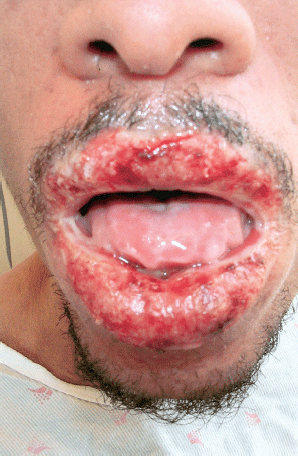Paraneoplastic Pemphigus is a blistering disease of the skin that I occasionally encounter in both my The Woodlands dermatology and Conroe dermatology offices. In general, a paraneoplastic condition is a reactive process that appears in direct correlation with an underlying malignancy or tumor. Typically, paraneoplastic conditions follow the time course of the underlying condition as they begin approximately the same time and resolve once the underlying condition has been treated. These conditions are not cancerous but are merely markers of an internal problem. Paraneoplastic Pemphigus has many clinical features similar to Pemphigus Vulgaris as oral ulcers and blisters form which usually progress onto the lips. The trunk and extremities is frequently involved with blisters and ulcers as well. The underlying malignancy stimulates the antibody production which attacks antigens in the dermo-epidermal junction of the skin. The most common tumors causing Paraneoplastic Pemphigus are: non-Hodgkins lymphoma, Castleman’s tumor, chronic lymphocytic leukemia, sarcoma, and thymoma. The treatment of Paraneoplastic Pemphigus involves treating the underlying causative condition. Immunosuppression has to be very carefully administered due to the presence of an underlying malignancy.





